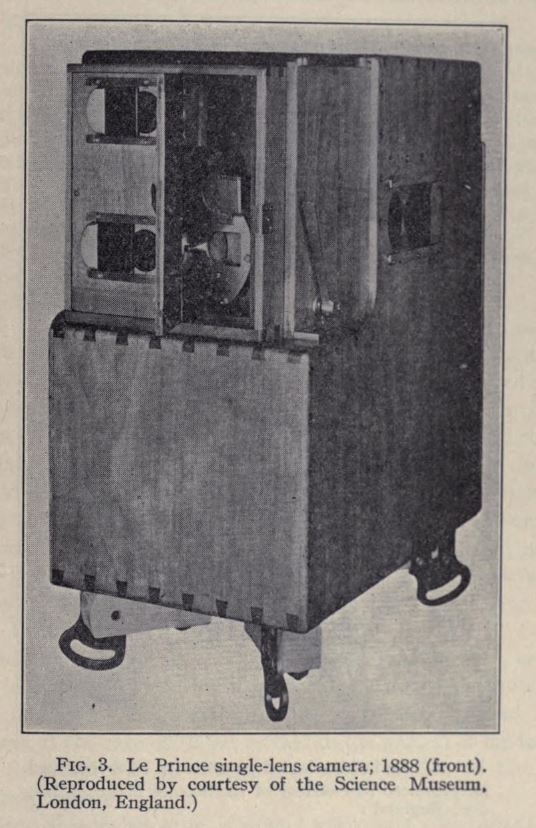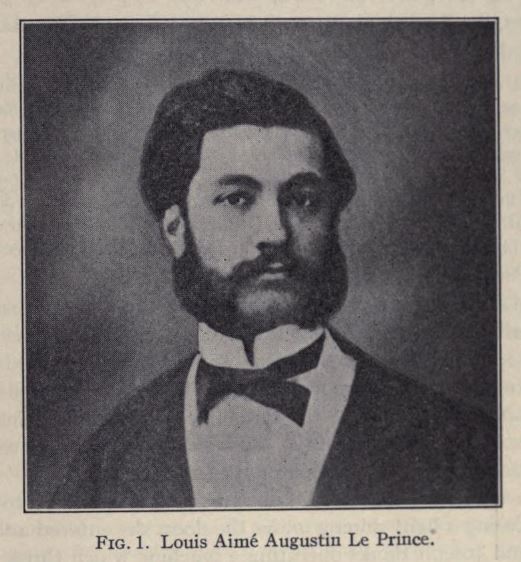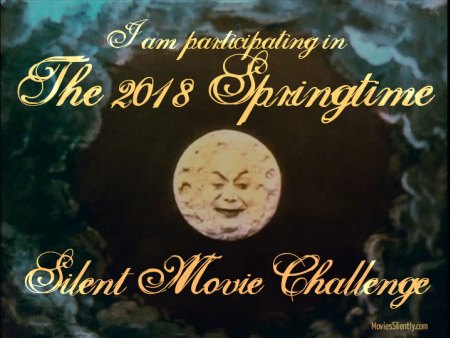This post is part of the Springtime Silent Movie Challenge: In the Beginning..., hosted by Fritzi at Movies Silently. "Here’s the challenge. Before June 21, 2018, you will:
"Watch 5 movies made between 1906 and 1914
"Watch 5 movies made in 1905 or before
"Share your experience on your blog, on social media or here in the comments (I will set up a special post for the purpose to publish on June 21)"
For my five 1905 or before movies, I thought I would look at some pioneering efforts.
My first film is one of the first films. Some people say it was the first movie shot on celluloid, but it was shot on strips of sensitized paper. Other people say it was the first movie shot with a movie camera. That may be correct.
Louis Aimé Augustin Le Prince was born in France in 1841. He moved to Britain in 1866 and to the United States in 1881. He took a US patent for a camera with 16 lenses that could capture motion, but it did it poorly because every lens captured a different angle.
He returned to Britain in 1887 and patented a single lens camera and projector.
On 14-October-1888, Le Prince shot a scene in the garden of his in-law's house at Roundhay, in Leeds. We see four people on the terrace of a home. A young man in a dark suit walks across the scene from left to right. This is Adolphe, Louis's son. Adolphe said that the young lady in the light dress is Annie Hartley, a friend of the Le Prince family. The older lady in black and the older man on the right are Sarah and Joseph Whitley, Louis's in-laws. Sarah Whitley died ten days after Le Prince shot the film. Adolphe said that Le Prince shot the movie at twelve frames per second.
I enjoy watching the film both for its historical importance and because it is a rare opportunity to see late Victorian people goofing around. Even poor Sarah Whitely, who was to die ten days later, looks as if she is having fun.
The National Science Museum in London produced a copy of the surviving frames in 1930. This led to a rediscovery of Le Prince and his work.
In 1890, Le Prince travelled to France to visit his family. After that, he was going to patent his latest devices in the UK, then travel to the US to exhibit them. After visiting his brother in Dijon, Le Prince, was seen boarding a Paris-Dijon express train in Dijon . He was not on the train when it arrived in Paris and was never seen again.
Many people assumed that he committed suicide, but his business was in good financial shape and his family life was happy. Some thought he might have fallen victim to robbers. In either case, how did his body and luggage disappear so completely? His wife suggested that Edison, who was trying to claim the invention of the motion picture, might have had Le Prince killed. To me, that does not seem likely.
In 2003, a person searching in Paris police archives found a photo of an 1890 drowning victim who resembled Le Prince.
The illustrations (Figs. 1-2-3) are from an article in the July, 1931 Journal of the Society of Motion Picture Engineers, "Career of L. A. A. Le Prince" by E Kilburn Scott.
Next Saturday: The first American movie shown to the public.





No comments:
Post a Comment
Comment moderation is turned on. Your message will appear after it has been reviewed.